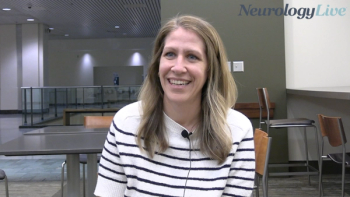
Enhancing Methodologies for Comprehensive Patient Outcome Analysis in Epilepsy: Derek Ems, MPH, CPHQ
The health economics outcomes research specialist at UCB discussed the need for improved methodologies to have a more accurate analysis of patient outcomes beyond what administrative databases can provide. [WATCH TIME: 2 minutes]
WATCH TIME: 2 minutes
"Moving forward, one of the limitations of this type of database is, we don't have the reasons for discontinuation as it is not captured in these types of datasets. Therefore, I envision future analyses where we have a little bit better methodology in terms of potentially capturing missed data from patients, like reason for medication discontinuation, or utilizing more electronic health records."
Dravet Syndrome (DS), a developmental epileptic encephalopathy, is characterized by drug-resistant seizures and other clinical features including intellectual disability and behavioral, sleep, and gait problems. According to a review recently published in Journal of Clinical Medicine, the pathogenesis of DS is strongly associated with the voltage-gated sodium channel dysfunction.1 Currently, the consensus for managing seizures for DS in the clinical practice consists of clinicians prescribing a combination of conventional and recently approved therapies such as stiripentol (Diacomit; Biocodex), cannabidiol (CBD; Epidiolex), and fenfluramine (Fintepla; UCB).
Presented at the
In a recent interview with NeurologyLive®, Ems, a health economics outcomes research specialist at UCB, talked about how databases can be enhanced to capture reasons for medication discontinuation, considering the current limitations of the presented study. He also talked about the role that electronic health records play in addressing the challenges of missing patients in database analyses. Additionally, Ems discussed how the emergence of a new medication for rare epilepsies, including fenfluramine, impacts patient outcomes, as well as shared his insights on what can be gained from persistence data.
REFERENCES
1. Gao C, Pielas M, Jiao F, et al. Epilepsy in Dravet Syndrome-Current and Future Therapeutic Opportunities. J Clin Med. 2023;12(7):2532. Published 2023 Mar 27. doi:10.3390/jcm12072532
2. Jaganathan S, Ems D, Sederman R, Wu CCS. A 12-month persistence analysis of fenfluramine, valproate, and levetiracetam in individuals with Dravet Syndrome: a comparison using US claims data. Presented at: 2023 AES annual meeting; December 1-5; Orlando, FL. Abstract 3.49.
3. UCB presents new data about the real-world experience of FINTEPLA® (fenfluramine) and rare epilepsy syndromes at 2023 American Epilepsy Society (AES) Annual Meeting. News Release. Published December 2, 2023. Accessed December 7, 2023. https://www.ucb-usa.com/stories-media/UCB-U-S-News/detail/article/ucb-presents-new-data-about-real-world-experience-of-fintepla-fenfluramine-and-rare-epilepsy-syndromes-at-2023-american-epilepsy-society-annual-meeting
Newsletter
Keep your finger on the pulse of neurology—subscribe to NeurologyLive for expert interviews, new data, and breakthrough treatment updates.



































